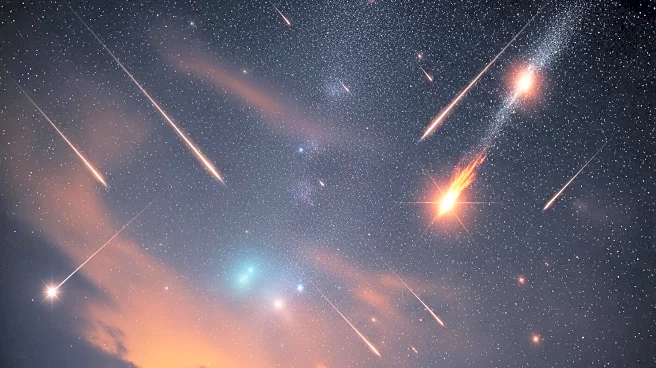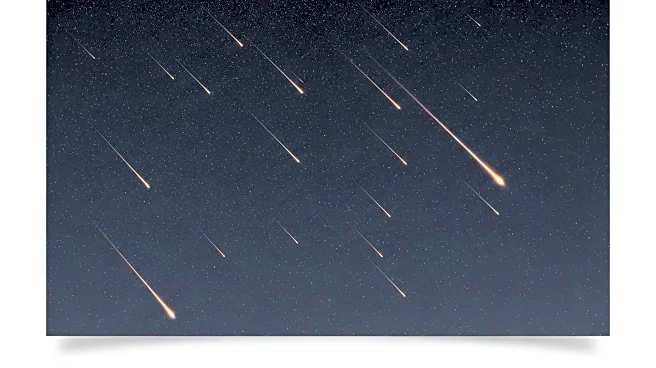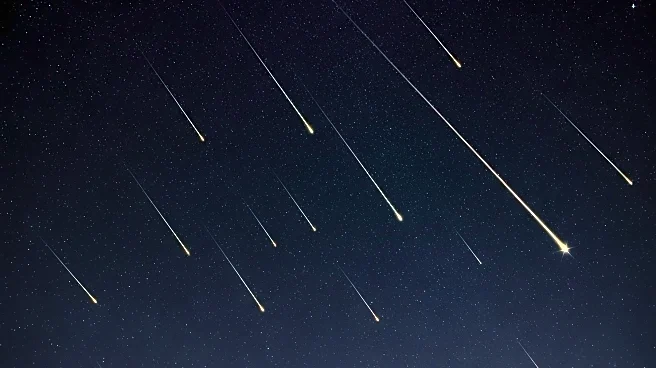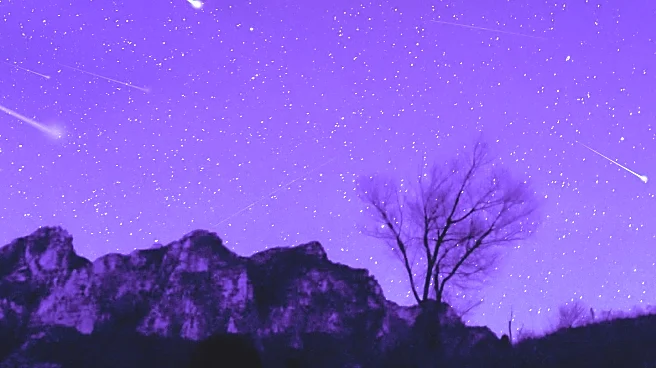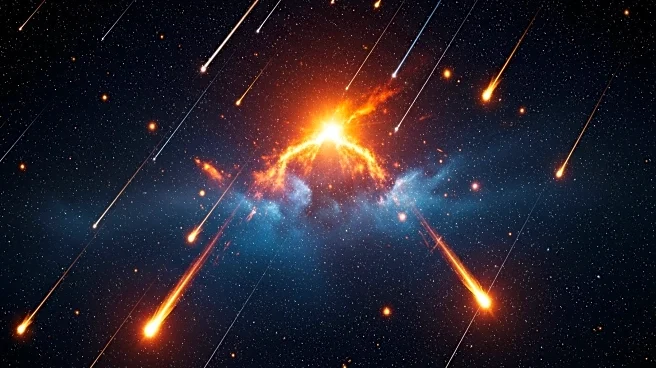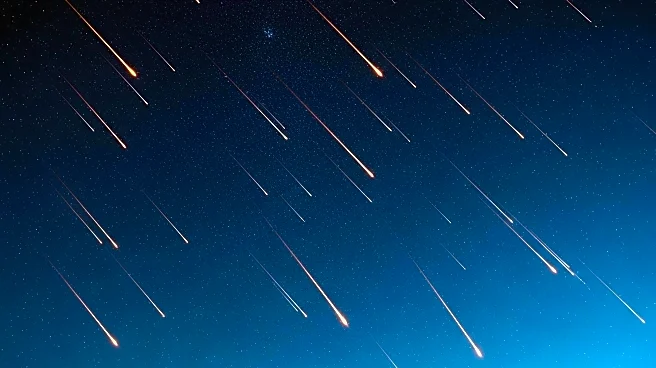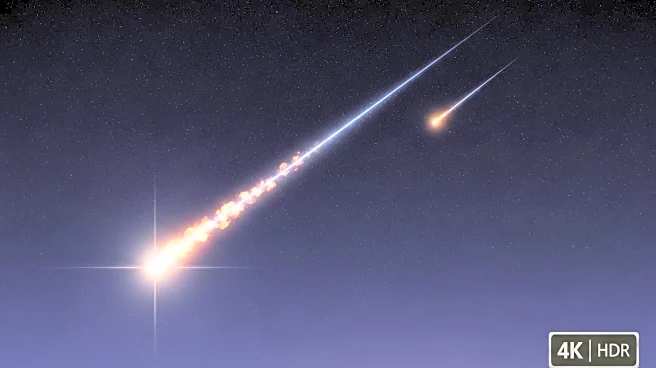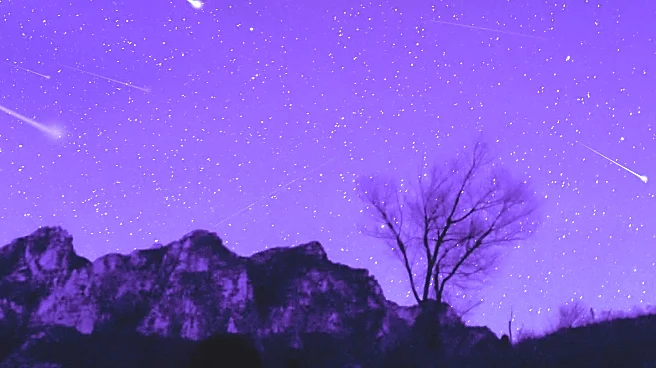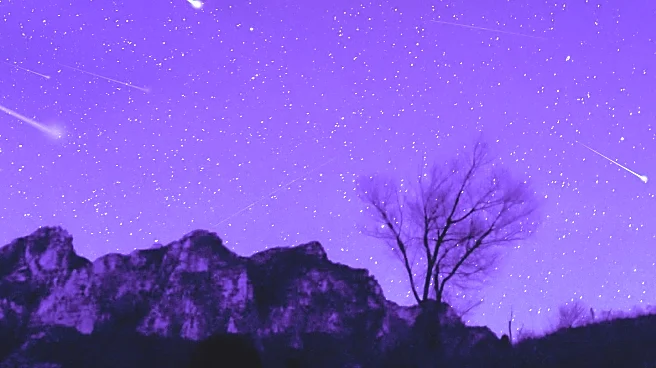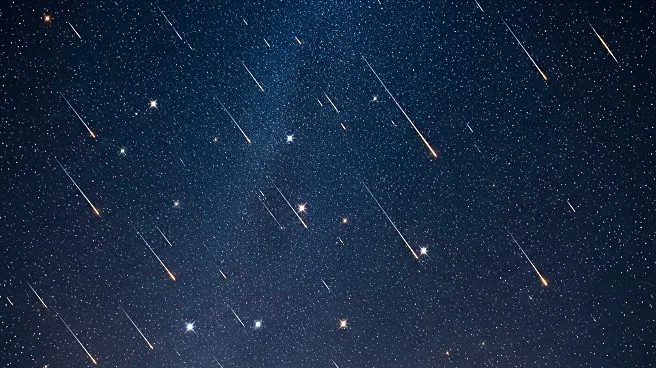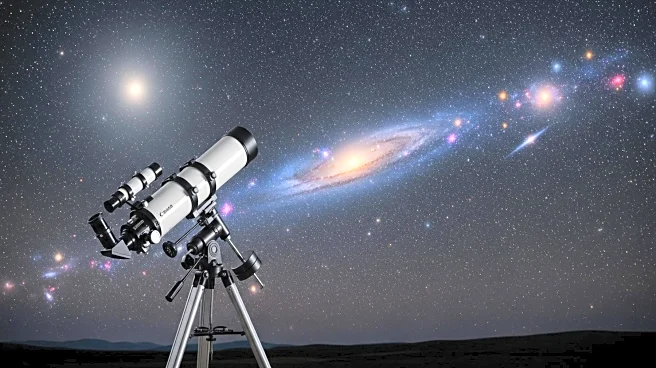What is the story about?
What's Happening?
The Southern and Northern Taurid meteor showers have commenced, with the potential to produce dramatic fireballs in the night sky. These meteor showers originate from the constellation Taurus and are linked to the comet 2P/Encke. The Southern Taurids have been active since September 20 and are expected to peak on November 4-5, while the Northern Taurids will become active on October 20, peaking on November 11-12. Stargazers can expect to see up to five meteors per hour during peak activity, although the light of a full moon may obscure dimmer meteors during the Southern Taurid peak.
Why It's Important?
The Taurid meteor showers are significant for astronomy enthusiasts and researchers due to their potential to produce fireballs, which are exceptionally bright meteors. These fireballs can illuminate the night sky, providing unique observational opportunities. The showers offer a chance for scientists to study the debris from comet 2P/Encke and understand more about the composition and behavior of meteors. Additionally, the showers attract public interest in astronomy, encouraging educational and recreational activities related to skywatching.
What's Next?
As the meteor showers progress, astronomers and enthusiasts will continue to monitor the skies for fireball activity. The American Meteor Society notes that periods when both Taurid streams are active often correspond with increased fireball occurrences. Observers are encouraged to find dark sky locations to maximize visibility and capture images of the meteors. The showers will continue to be a focal point for skywatching events and educational programs throughout their duration.
AI Generated Content
Do you find this article useful?
